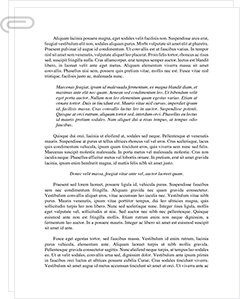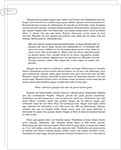 Study Document
Study Document
Factors Influencing Market Entry and Exit Decisions Essay
Pages:2 (701 words)
Sources:3
Document Type:Essay
Document:#29011236
Market Entry and Exit Strategies and Decisions
Entering the market in a timely fashion is equally as important as exiting the market. Just as leaving the market, market entry can be planned. In any market, a business can make money by properly timing both the entry and exit. If one miscalculates any of these, then the business runs the risk of not getting the return on investment.
Entering a market sooner has the advantage of being a market pioneer (Bednarek, 2013). In contrast, late market entry can be advantageous since the products are cheap or improved unlike those already in the market. Already cluttered markets serve an opportunity for late arrival based on improved quality. For instance, a company may launch its product in German, Mexico, and Australia but at different times. The company may launch the product in one country at a time and will only enter the next market after establishing sales in the previous market.
Timing is a major contributor to a company's success or failure. Some markets are barriers at particular times of the year. For instance, companies that deal with Christmas products will only enter the market early enough to gain momentum as the peak shopping season approaches (Drews & Lamson, 2016).
A risk to entry is something that impedes of blocks the ability to enter a market. A risk to exit impedes the ability of a company leaving a market comfortably. Markets that are difficult for new entrants have the benefits of limited rivalry among competitors and good profitability. On the contrary, markets that are easy to enter may attract new entrants during seasons of profitability. However, markets that are difficult to exit are characterized by intense rivalry than markets that are easy to exit. Some of the common risks associated with market entry and exit are discussed below.
A monopoly situation is a very serious risk for market entry. Monopoly is a situation whereby one company becomes the major provider of a service or product in the market (Miles, 2011). A monopoly can be created through the merger of competing firms or state-owned companies. Often, a monopoly situation can pose a risk in the market by using licenses and patents to prevent the entry of any new company through controlling suppliers, resources, distribution channels and using price strategies. A good example…
Sample Source(s) Used
References
Bednarek, D. (2013). Market entry barriers for German small and medium-sized companies in India. Munich: GRIN Verlag GmbH.
Drews, R., & Lamson, M. (2016). Market entry into the USA: why European companies fail and how to succeed. http://public.eblib.com/choice/publicfullrecord.aspx?p=3568046.
Miles, D. A. (2011). Risk factors and business models: Understanding the five forces of entrepreneurial risk and the causes of business failure. Boca Raton: ***.com.
Related Documents
 Study Document
Study Document
Market Orientation of Medical Diagnostic Units Dissertation
Market Orientation of Medical Diagnostic Units Dissertation for Master of Health Administration i. Introduction ii. Objectives iii. Description iv Administrative Internship v. Scope and Approach vi. Growth vii. Methodology viii. Hypothesis ix. Survey Questionnaire x. Research Design xi. Observation and Data Presentation xii. Test provided xiii. Analysis of findings Marketability of Patient Satisfaction Importance of Employee Satisfaction xiv. Conclusions and Recommendations xv. Bibliography xvi. Notes xvii. Appendices Market Orientation of Medical Diagnostic Units
 Study Document
Study Document
Factors That Prevent Perfectly Competitive Markets in the United States...
Prevent Competitive Markets in the United States The United States follows a system of "free market economy" in which most businesses are privately owned and where individual producers and consumers determine the kinds of goods and services produced as well as the prices of such products. Competition is a key factor in market economies as it keeps the prices of products in check, forces the competitors to enhance the efficiency
 Study Document
Study Document
Market Structure and Pricing Practices
Managerial EconomicsOutlineIntroductionOverview of Market StructureOverview of PricingRelationship between Market Structure and Pricing StrategyMarket Structure Pricing Practices� Pricing Practices for Monopolistic, Monopolistic Competition, and Oligopolistic Markets� Pricing Practices for Perfect Competition Markets� Price Matching� Inducing Brand Loyalty� Randomized PricingConclusionReferencesMarket Structure Pricing PracticesMarket structure is one of the major factors that shape decisions made by business owners and managers. Generally, business owners and managers do not make decisions in a vacuum as
 Study Document
Study Document
Market Leadership Report Final Project
Office Depot started its operation five years after Staples. The company has aligned its business strategy to target increasing its market share through business policies similar to those undertaken by Staples Inc. The company is locally owned and faces difficulties in capital expansion to be able to roll more distribution outlets similar to Staples. This has incapacitated the company in acquiring economic of scale in operation. The company currently
 Study Document
Study Document
Operations Decisions Market Structure Is a Microeconomics
Operations Decisions Market structure is a microeconomics term that encompasses the interconnected attributes of a market. The variables examined when considering market structure include characteristics of buyers and sellers, competition, product differentiation, and ease of moving into and from the market. Factors such as the number and strength of buyers and sellers, along with any collusion that may develop among them, are very influential on market structure, as evident in this
 Study Document
Study Document
Tesco Was Tesco's Decision to Enter the
Tesco Was Tesco's decision to enter the U.S. market a good decision? Why? Tesco did made as inspiring decision to enter the U.S. market because the U.S. market could easily help Tesco penetrate a status in the global market. Tesco has thus build up its database of knowledge while also simultaneously franchising and internationalising in the U.S. market, it is important to note that experience and training happen to be learned from



